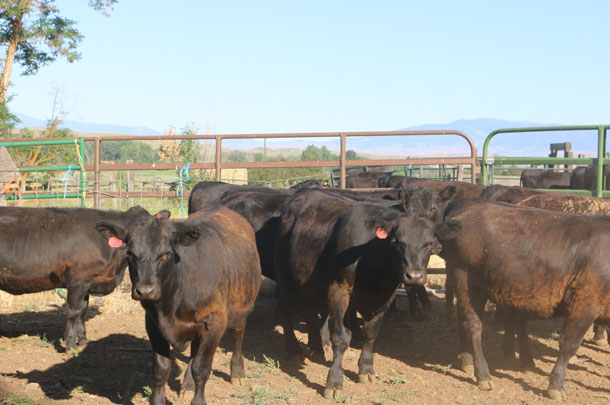Keep two things in mind to prevent shipping shrink when it’s time to take calves to the sale.
Growing up, there were several days that brought anxiety to the ranch: branding and sale day were probably the biggest. While there were a million things that could impact the success of branding day (mainly rain and having enough help), when it came to sale day, the entire family knew the importance of what was riding on that single day.
A resounding concern on sale/shipping day is shrink. Shrink is well researched and understood in cattle production. Fill and tissue shrink are the two main sources of shrink in cattle transportation and marketing. Fill shrink is a result of loss of rumen fill, manure or urine. This type of shrink is recovered a short time after cattle return to normal water and feed intake but can have a big impact on the weight of cattle, especially in a marketing situation. There are a few simple concepts that can be considered to help mitigate some fill shrink at shipping.
Diet
Research has shown that cattle on lush green forage will shrink more than cattle on less-digestible feed. This make sense, as more-digestible feed will move through the rumen quicker, and cattle will be “empty” sooner than those on feeds that typically take longer to digest. For example, cattle fed native hay versus alfalfa tend to shrink less. The rate of passage (from the rumen) for native hay is approximately 70 hours, where alfalfa is typically 36 hours. Also, keep in mind that lush forages are high in water content (for example, wheat pasture has 75% moisture), and this will alter passage rate, with water movement being much quicker than dry matter. Transitioning cattle to a diet that has a slower rate of passage prior to shipping can slow the rate of fill shrink. Major changes in the diet should not be made close to shipping, but in some cases, adjustments prior to shipping can be made. If considering making these changes, producers should also evaluate any decrease in gains that might be seen from the transition to a less digestible diet over any extended period and how that compares to loss from shrink.
Time of gather
Typically, when working or handling cattle, it is assumed, the earlier the better. However, when it comes to fill shrink, this is not the case. Let’s talk for a minute about grazing behavior, especially when cattle graze. Cattle tend to graze in a fairly set time pattern. The day begins with their major grazing period at sunrise and generally lasts about three to five hours. The second major grazing period is in the late afternoon, lasting about three hours. Cattle will graze some throughout midday; however, the bulk of their grazing takes place during the early morning and evening. When we stop and think about how these times overlap with time of gather, it should throw up a red flag. If producers ride out at daybreak to gather, they are gathering cattle prior to their most “filling” grazing period of the day. Basically, we are gathering cattle on an empty stomach. They have rested all night and are just getting up to graze for the morning. Therefore, they do not have that last meal to fill them up prior to shipping.
A Kanas State study found that cattle that were gathered midmorning (9:00 a.m.) weighed 15 pounds more and had a reduced rate of shrink (.86% per hour) than cattle gathered at daybreak (6:00 a.m.). If we do the math on this, 15 pounds can translate into $19.50 ($1.30 per pound), making time of gather a worthy consideration.
While there is typically less flexibility on shipping times for cattle going to market due to sale times, if producers can schedule shipment to allow cattle to be gathered at midmorning, it will likely have a positive impact on fill shrink rates.
Cattle producers get paid by the pound, and this makes shrink is a viable concern that can impact payday. While these two considerations will not fit into every management scenario, they can be a viable option in some cases. ![]()
Photo: Carrie Veselka.








